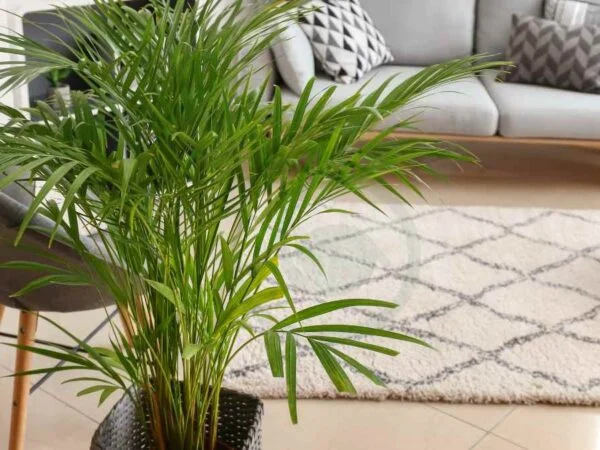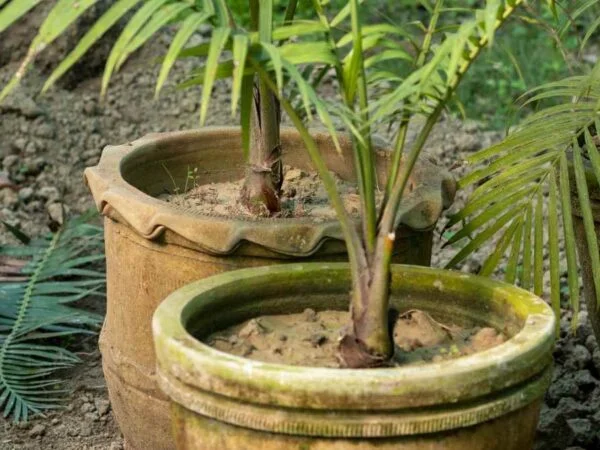
When it comes to choosing between the kentia palm and the areca palm for your indoor oasis, there are key differences to consider. While the kentia palm, a houseplant, boasts elegant, dark green fronds and thrives in low light conditions, the areca palm, a tree, shines with its feathery, vibrant green leaves and a preference for bright, indirect sunlight. Understanding these distinctions can help you select the perfect palm to complement your space's ambiance and lighting requirements. Whether you lean towards the sophisticated allure of the kentia or the lively charm of the areca trees, each palm brings its unique touch of nature indoors.
Key Takeaways
- Indoor Palm Care: Both Kentia and Areca palms are excellent indoor plant choices, but they have different care requirements. Ensure proper lighting, watering, and humidity levels based on the specific needs of each palm.
- Decor Enhancement: Incorporating palm trees like Kentia and Areca can elevate indoor decor by adding a tropical and lush feel. Consider their size, shape, and color to complement your space effectively.
- Optimal Growing Conditions: To successfully cultivate indoor palms, create a suitable environment by providing adequate sunlight, well-draining soil, and regular fertilization. Monitor the temperature and adjust care accordingly.
- Maintenance Tips: Regularly inspect your palms for pests, yellowing leaves, or signs of stress. Prune dead foliage, dust the leaves, and repot when necessary to promote healthy growth and longevity.
- Personalized Selection: When choosing between Kentia and Areca palms, consider factors such as space availability, desired maintenance level, and aesthetic preferences. Select the palm that aligns best with your lifestyle and home environment.
Palm Trees Overview
Kentia Highlights
Kentia Palm is known for its elegant green palm leaves that add a touch of tropical beauty to any space. This palm species thrives in low light conditions, making it ideal for indoor environments with limited sunlight. Kentia Palms have low humidity requirements, making them easy to care for even in drier climates. The sustainable cultivation practices of Kentia Palm make it an environmentally friendly choice for plant enthusiasts.
Areca Features
Areca Palm stands out with its slender stems and feathery leaves, creating a graceful and airy appearance. One distinctive feature of the Areca Palm is the presence of red spots on its stems, adding a pop of color to its overall look. Originating from tropical regions, Areca Palm is well-suited to warm and humid climates, thriving in environments that mimic its natural habitat.
Kentia Palm Spotlight
Growth Habits
Kentia Palm exhibits a slow growth rate, making it suitable for indoor environments with limited space. In the wild, these palms can reach impressive heights, but when cultivated indoors, they maintain a more manageable size. Propagating Kentia Palms from imported seeds is a common practice among enthusiasts and nurseries to ensure genetic diversity.
Care Tips
Watering Needs
- Prefer slightly damp soil to thrive.
- Avoid overwatering as it can lead to root rot.
- Refresh by showering or exposing to light rain occasionally.
Light Requirements
- Tolerates low light conditions well.
- Ideal light levels are bright, indirect sunlight.
- Light directly influences the health and growth of Kentia Palms.
Design Impact
Kentia Palms bring a touch of elegance to indoor spaces with their graceful fronds and tropical vibes. They complement various interior design styles, adding a refreshing green element that enhances aesthetics. Areca Palms, on the other hand, offer a different visual impact with their feathery fronds and vibrant presence in interior settings. Both palms are versatile in enhancing different design themes, from modern minimalist to tropical oasis.
Areca Palm Focus
Growth Patterns
Areca Palm grows faster than Kentia Palm, reaching heights of 20-30 feet. Its growth is influenced by ample sunlight, regular watering, and well-draining soil. The sustainability of Kentia Palm's growth lies in its slow but steady development, making it a long-lasting addition to indoor spaces.
Maintenance Guide
Soil Preferences
Kentia Palm thrives in well-draining soil with good moisture retention. Areca Palm, on the other hand, requires soil that drains well to prevent root rot. The quality of soil directly impacts the health and growth of both palms.
Humidity Levels
Kentia Palm prefers low humidity levels, making it suitable for indoor environments with drier air. Areca Palm thrives in higher humidity levels ranging from 50-60%. Humidity plays a crucial role in maintaining the overall health and appearance of these palms.
Aesthetic Appeal
The Kentia Palm exudes elegance with its graceful fronds and tropical vibe, adding a touch of sophistication to any space. Areca Palm boasts lush green foliage that brings vibrancy and life to indoor settings. Both palms serve as eye-catching decor elements that enhance the aesthetics of homes or offices.
Comparing Kentia and Areca
Visual Differences
Kentia Palm stands out with its wider leaves compared to the slender leaves of Areca Palm. The stems of Kentia Palm exhibit a range of colors, from deep greens to vibrant yellows, while Areca Palms typically have uniform green stems. These visual features serve as key identifiers between the two palms.
Care Comparison
When it comes to care, Kentia Palms are known for their low maintenance, requiring infrequent watering and moderate sunlight. On the other hand, Areca Palms demand more attention with regular watering and high humidity levels. Specific care practices include monitoring soil moisture for Kentia Palms and providing sufficient humidity for Areca Palms. The maintenance differences lie in the watering frequency and light exposure needs of each palm.
Space Requirements
Growing Kentia Palms indoors necessitates ample space due to their tendency to grow tall. They thrive in spacious areas where their elegant fronds can spread out freely. In contrast, Areca Palms have size limitations indoors, making them suitable for compact spaces or smaller rooms. Adequate space is crucial for these palms to ensure proper air circulation and healthy growth.
Indoor Plant Cultivation
Ideal Conditions
Kentia Palm thrives in indirect sunlight and well-draining soil, preferring temperatures around 65-80°F. Areca Palm requires bright, indirect light and temperatures between 65-75°F for optimal growth. Both palms benefit from occasional misting to maintain humidity levels.
Common Challenges
Kentia Palms are susceptible to overwatering, leading to root rot, while Areca Palms may suffer from yellowing leaves due to insufficient light. To combat root rot, ensure proper drainage by using a well-draining potting mix and allowing the soil to dry out between waterings. For yellowing leaves on Areca Palms, consider moving them to a brighter location or supplementing with artificial light if natural light is limited.
Enhancing Indoor Decor
Tropical Ambiance
Kentia Palm enhances indoor spaces with its elegant appearance and tropical charm. The lush, exotic foliage of the Areca Palm brings a vibrant touch to interiors. These palms play a crucial role in creating a tropical paradise within any indoor setting.
Placement Ideas
For Kentia Palms, consider placing them in corners or as standalone pieces to add a touch of greenery to home decor. Areca Palms thrive best near bright, indirect light sources, making them ideal for living rooms or near windows. Proper placement is essential for both these palms to ensure optimal growth and development.
Success Tips for Indoor Palms
Pruning Practices
Pruning is essential to maintain Kentia Palm's appearance, ensuring it stays neat and healthy. Regularly remove any yellow or brown fronds to promote new growth. For Areca Palm, prune dead or damaged leaves to enhance its overall aesthetic appeal.
To keep Areca Palm healthy and attractive, trim off any browning tips on the leaves. Ensure proper air circulation by removing overcrowded fronds. Regular pruning not only improves the visual appeal but also prevents pest infestations.
Regular pruning is crucial for the overall health of these palms. It helps in removing diseased or damaged parts, promoting better air circulation and sunlight exposure. This practice also stimulates new growth and maintains the plant's shape.
Fertilizing Schedule
For Kentia Palm, fertilize every 2-3 months during the growing season with a balanced liquid fertilizer. Consider using a slow-release fertilizer to ensure continuous nutrient supply. Avoid over-fertilizing as it can lead to salt build-up in the soil.
Areca Palm requires a specific fertilizer rich in nitrogen, potassium, and magnesium for optimal growth. Apply a water-soluble fertilizer every 4-6 weeks during the growing season. Always dilute the fertilizer to prevent root burn and follow the instructions carefully.
Maintaining a balanced fertilizing routine is crucial for these palms' overall health and growth. It provides essential nutrients for vibrant foliage, strong root development, and improved resistance to diseases. Always monitor the plants' response to fertilization and adjust as needed.
Choosing the Right Palm
Considerations for Selection
When deciding between Kentia Palm and Areca Palm, space is a crucial factor. Kentia Palms thrive in low light and are perfect for spaces with less sunlight. On the other hand, Areca Palms require bright, indirect light to flourish. Consider your space's lighting conditions before choosing.
In terms of care requirements, Kentia Palms are more forgiving and can tolerate occasional neglect. They are ideal for beginners or those with busy schedules. Conversely, Areca Palms need regular watering and high humidity levels to thrive. Factor in your availability for plant care when making a decision.
Personal preferences play a significant role in selecting indoor palms. Some may prefer the elegant and graceful fronds of the Kentia Palm, while others may be drawn to the lush and vibrant appearance of the Areca Palm. Consider your aesthetic preferences and how each palm complements your indoor decor.
Personal Preferences
Personal taste and style heavily influence the choice between Kentia Palm and Areca Palm. Some individuals may resonate more with the tropical vibe that an Areca Palm brings to a room, while others may prefer the classic elegance of a Kentia Palm. Consider which palm aligns best with your personal style.
People often develop an emotional connection with their indoor plants, viewing them as companions that enhance their living space. The decision between a Kentia Palm and Areca Palm may involve factors beyond aesthetics, such as the feeling each plant evokes or memories associated with similar plants from the past.
When selecting indoor plants like palms, it's essential to consider personal preferences to ensure a harmonious blend with your living environment. Your choice should not only reflect visual appeal but also resonate with you on a deeper level, creating a positive atmosphere within your home.
Final Remarks
As you consider adding a touch of green to your indoor space, the Kentia Palm and Areca Palm stand out as excellent choices. Their unique characteristics, care requirements, and aesthetic appeal make them popular options for plant enthusiasts like yourself. By understanding the distinctions between these two palms, you can make an informed decision that suits your preferences and living conditions. Remember to provide adequate light, water, and humidity to ensure the health and vitality of your indoor palms.
Incorporate these tips into your plant care routine to create a thriving indoor oasis that not only enhances your decor but also contributes to a healthier living environment. Share your newfound knowledge with fellow plant lovers and continue exploring the world of indoor gardening for endless inspiration and enjoyment.
Frequently Asked Questions
What are the key differences between Kentia Palm and Areca Palm?
Kentia palms have a more upright growth habit, while Areca palms have a bushier appearance. Kentia palms are more tolerant of lower light conditions compared to Areca palms. Areca palms have thinner leaflets, giving them a softer look than the broader leaves of Kentia palms.
How do I choose the right palm tree for my indoor space?
Consider factors like lighting conditions, space availability, and desired maintenance level. If you have low light, opt for a Kentia palm. For brighter spaces and a bushier look, go for an Areca palm. Assess your preferences and care capabilities before deciding.
What are some tips for successfully cultivating indoor palm trees?
Ensure adequate sunlight exposure based on the palm species' requirements. Use well-draining soil and water consistently but avoid overwatering. Maintain proper humidity levels by misting the leaves or using a humidifier. Regularly inspect for pests and diseases to address issues promptly.
How can indoor palms enhance the decor of my living space?
Indoor palms add a touch of nature, creating a tropical ambiance in your home. Their green foliage brings vibrancy and freshness to any room. With their elegant structure and lush appearance, palm trees serve as stylish decorative elements that complement various interior design styles.
What are some essential considerations for successful indoor palm care?
Regularly dust the leaves to allow proper photosynthesis. Rotate the plant occasionally to ensure uniform growth. Monitor soil moisture levels closely to prevent root rot. Trim yellowing or damaged fronds promptly to maintain plant health. Follow specific care guidelines tailored to each palm species for optimal growth.
Image Source: Paid image from CANVA





